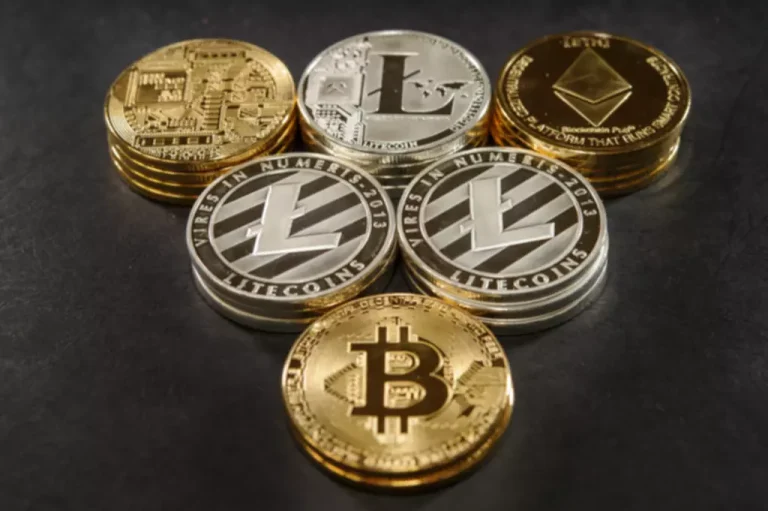The DMA controller then provides addresses and read/write management lines to the system memory. Each time a byte of knowledge is ready to be transferred between the peripheral system and reminiscence, the DMA controller increments its internal tackle register till the full block of knowledge is transferred. The cycle stealing mode is used in systems in which the CPU should not be disabled for the length of time needed for burst transfer modes. However, in cycle stealing mode, after one unit of information switch, the management of the system bus is deasserted to the CPU by way of BG.
This simple method makes it easier to implement and perceive than different forms of DMA configurations. A trendy x86 CPU might use more than 4 GB of memory, both utilizing the native 64-bit mode of x86-64 CPU, or the Physical Address Extension (PAE), a 36-bit addressing mode. In such a case, a device using DMA with a 32-bit address bus is unable to address reminiscence above the 4 GB line.



They are also referred to as channels that may perform DMA data transfers in accordance with their programming. The processor of a computer performs plenty of functions including data switch between the exterior direct market access forex gadgets and main reminiscence. From initializing the data switch to storing it on the vacation spot in the primary reminiscence, all the processing is controlled by the CPU.
Bus Master Dma
Here, the DMA controller takes management of the system bus for knowledge transfer. In this mode, the DMA controller acts as a bus grasp and communicates instantly with reminiscence or different units without involving the CPU. By implementing arbitration, DMA optimizes data move by managing competing requests effectively. The arbiter follows predefined rules to grant entry primarily based on predetermined priorities or protocols set by system designers. This methodology enhances general system efficiency by balancing communication between various peripherals effectively.



The CPU can then resume its tasks or handle any needed follow-up actions based on the completion of the information transfer. In Interleaved DMA, knowledge is divided into smaller blocks or packets, which are transferred alternatingly between completely different units. This ensures environment friendly reminiscence bus utilization and reduces bottlenecks that might happen with sequential transfers.
Content: Direct Memory Access In Laptop Architecture
Firstly, we will see why we have to use DMA and what are some great benefits of utilizing DMA in fashionable computers and microcontrollers. Direct Memory Access (DMA) is vital for IT infrastructure as it turbocharges information transfer efficiency by releasing up the CPU from dealing with each byte change. Think of it as a site visitors controller rerouting information directly between gadgets and reminiscence lanes, bypassing CPU site visitors jams. Once the info switch is complete, the DMA controller releases management of the system bus.
The CPU processes an instruction, then the DMA controller transfers one information worth, and so on. Data is not transferred as rapidly, but CPU is not idled for as lengthy as in burst mode. Cycle stealing mode is useful for controllers that monitor data in real time. They were supported to the extent they’re required to help built-in legacy PC hardware on later machines.



In this case, the gadget sends an interrupt to the processor each time it is prepared but the processor requires some time to switch itself from the principle program to the subroutine. But if the asynchronous I/O gadget is quick and generates giant bulks of knowledge it can not anticipate the delay which also results in data loss but again. So, to cater to this downside and preserve the efficiency of the system, a method called DMA is launched that allows https://www.xcritical.com/ the external peripheral to entry the memory directly with minimum intervention of the processor. This is implemented with the assistance of a controller known as DMAC that serves to be the master of the bus to manage the communication at that exact time. Direct memory entry (DMA) is a technology that allows hardware devices to transfer information between themselves and reminiscence without involving the central processing unit (CPU).
Dma Modes
In the bus arbitration course of, a DMA gadget initially controls the bus and turns into the current bus grasp. It then transfers its data block and finally leaves it to pass its management onto the opposite DMA system. Keeping the wants of the peripherals in view, they take turns to turn out to be the master and access the bus on a precedence foundation. Once the DMA controller positive aspects management of the system bus, it could instantly entry the reminiscence with out involving the CPU.
Many hardware methods use DMA, including disk drive controllers, graphics playing cards, network playing cards and sound cards. DMA can additionally be used for intra-chip knowledge switch in some multi-core processors. Computers which have DMA channels can switch information to and from devices with a lot less CPU overhead than computers without DMA channels. Similarly, a processing circuitry inside a multi-core processor can switch information to and from its native reminiscence with out occupying its processor time, allowing computation and data transfer to proceed in parallel. To perform an enter, output or memory-to-memory operation, the host processor initializes the DMA controller with a rely of the variety of words to transfer, and the reminiscence tackle to make use of.
But the processor and a quantity of other DMA units may need to use the bus on the same time to entry the main reminiscence. So to resolve this dispute and organize the actions of the DMA gadgets that are regularly requesting to transfer data, a process known as arbitration is implemented on the computer bus. Direct Memory Access makes use of hardware for accessing the memory, that hardware is known as a DMA Controller. It has the work of transferring the information between Input Output gadgets and major memory with very less interaction with the processor.
Direct Memory Address sometimes generally known as DMA is a data switch technique by which I/O gadgets communicate directly with the reminiscence without passing by way of the Central Processing Unit. In this hardware mechanism, a DMA controller substitutes the CPU unit and is answerable for accessing the input-output gadgets and reminiscence for transferring information. This results in high knowledge switch rates between the peripherals and the reminiscence and communicates large blocks of data speedily. Without DMA, when the CPU is using programmed input/output, it is sometimes totally occupied for the entire duration of the learn or write operation, and is thus unavailable to perform different work. With DMA, the CPU first initiates the transfer, then it does other operations while the switch is in progress, and it lastly receives an interrupt from the DMA controller (DMAC) when the operation is finished. This characteristic is beneficial at any time that the CPU can not sustain with the rate of information switch, or when the CPU must perform work whereas ready for a relatively sluggish I/O information switch.
DMA reduces the overhead involved in knowledge transfers, liberating up the CPU to continue processing other operations as a substitute. DMA channels ship data between an attached peripheral system and the system reminiscence. System sources such as the CPU, reminiscence, hooked up I/O gadgets and a DMA controller are linked via a bus line, which is also used for DMA channels. The DMA controller is used to begin reminiscence read/write cycles and to generate memory addresses. A bus arbiter could be the processor or dedicated hardware related to the bus.
- Computers avoid burdening the CPU so, they shift the work to a Direct Memory Access controller.
- Unlike other forms of DMA that operate independently once initiated, programmed I/O requires continuous involvement from the CPU all through the entire data switch course of.
- This mechanism ensures fair entry and prevents one system from monopolizing the bus.
- In programmed I/O, the processor retains on scanning whether or not any gadget is prepared for knowledge switch.
- Direct memory access (DMA) is a mode of knowledge switch between the memory and I/O devices.
These symbols, seen on hardware schematics of pc techniques with DMA functionality, symbolize digital signaling strains between the CPU and DMA controller. A system that uses DMA should be configured to use each lines of the assigned DMA channel. An various to DMA is Ultra DMA, which provides a burst information switch fee up to 33 megabytes per second (MBps).
The processor reply to this signal by suspending the buses and transferring an HLDA acknowledgment sign. When the DMA controller will get the HLDA sign, it transfers a control signal to switch the switch place from A to B. Once the data transfer is completed, the DMA controller triggers an interrupt to inform the CPU.
As the CPU is initiating, it might be the case that the processor would not pay consideration to the exterior I/O gadget which is ready for data switch which will result in data loss. Once the DMA controller has management of the bus, it initiates the actual information movement between gadgets and memory. The DMA controller coordinates with the supply and vacation spot units to effectively transfer information with out involving the CPU.
Programmed I/O DMA is a technique where the CPU directly controls knowledge transfers between peripheral gadgets and memory. In this type of DMA, the CPU initiates each knowledge transfer by issuing instructions to move information to or from reminiscence. Unlike single-ended DMA, where just one device initiates transfers, and dual-ended DMA, where two units can entry memory independently, arbitrated-ended DMA introduces arbitration logic for efficient resource allocation. It allows multiple devices to share the bus without inflicting conflicts or delays in information transfer.
